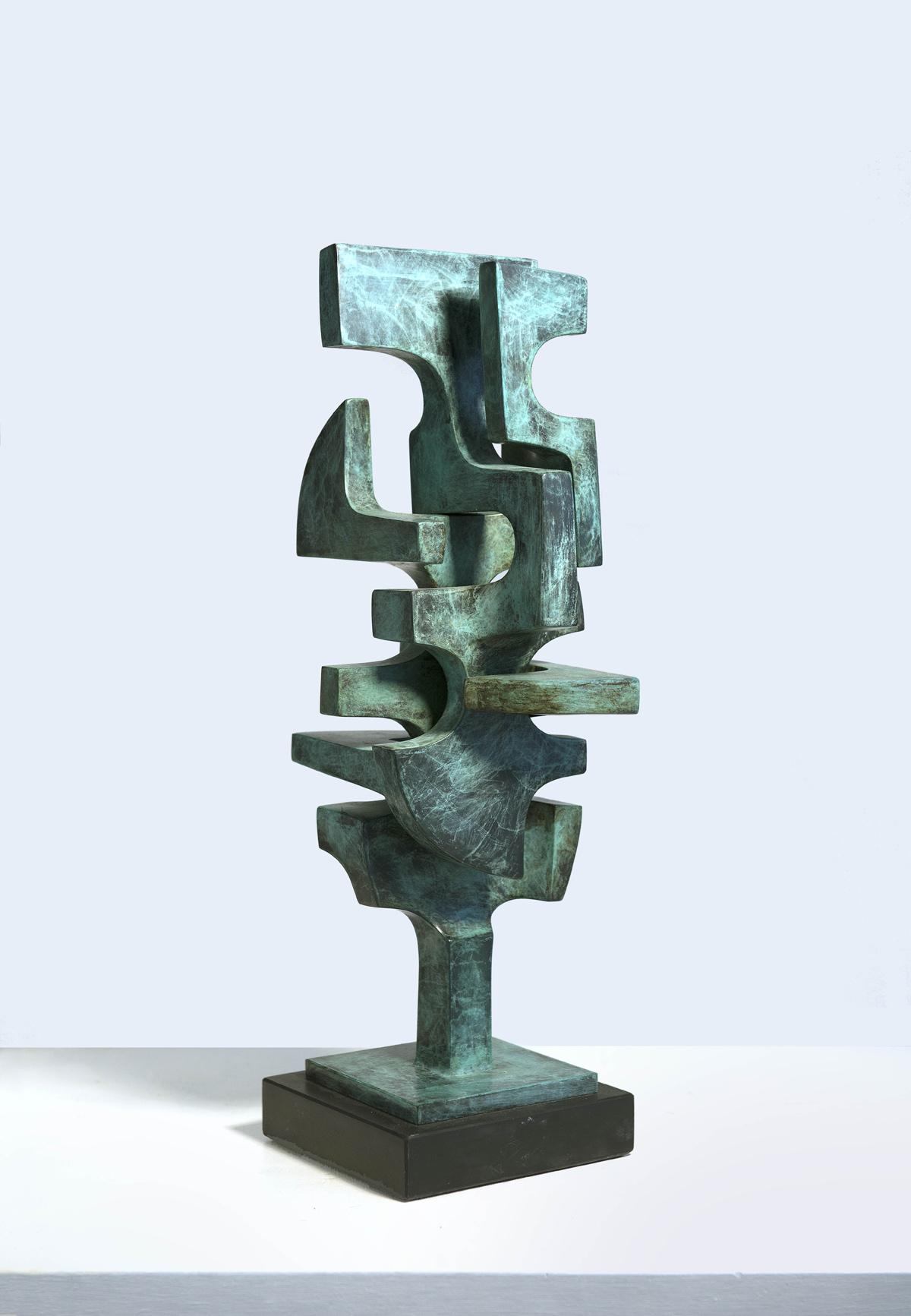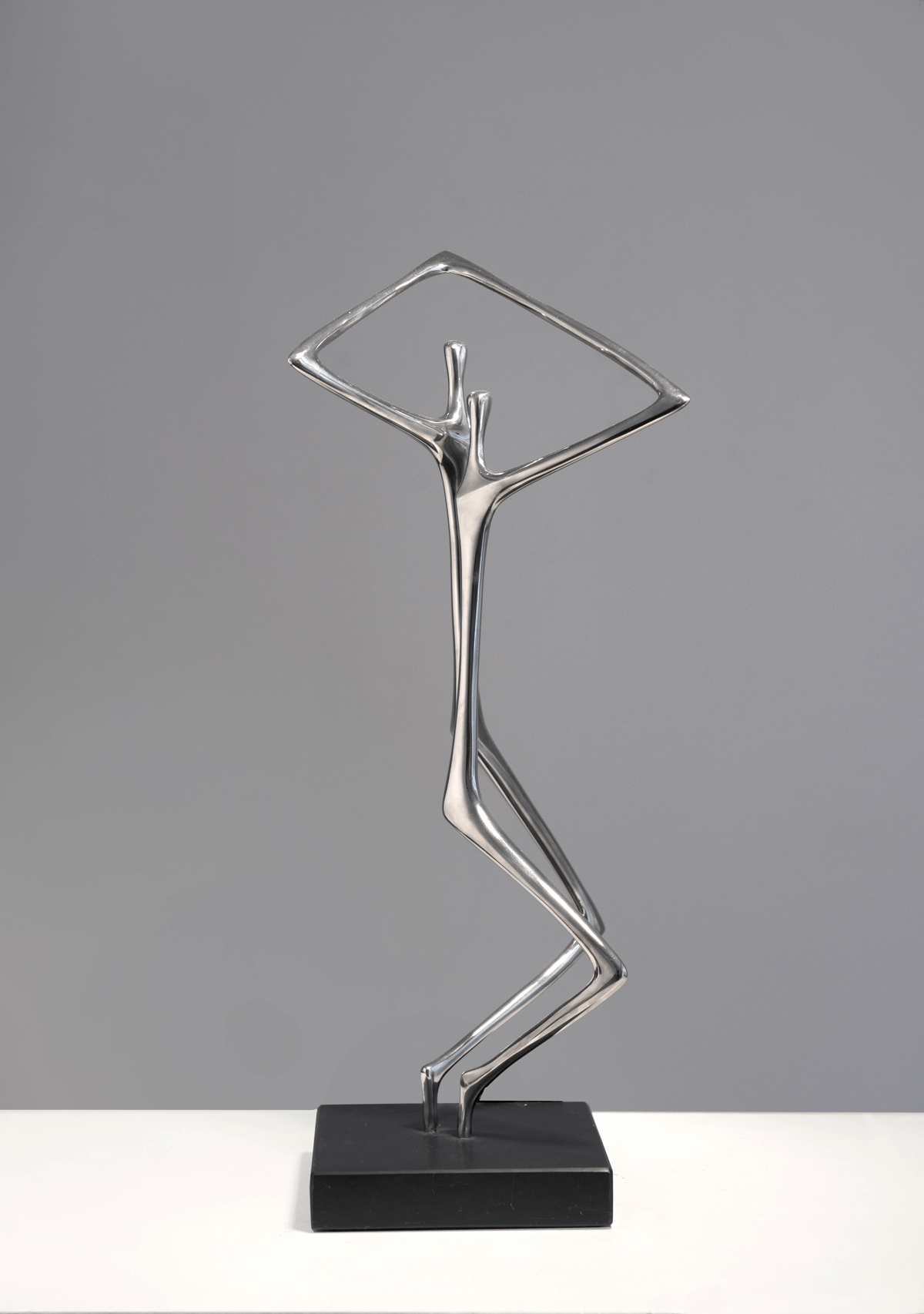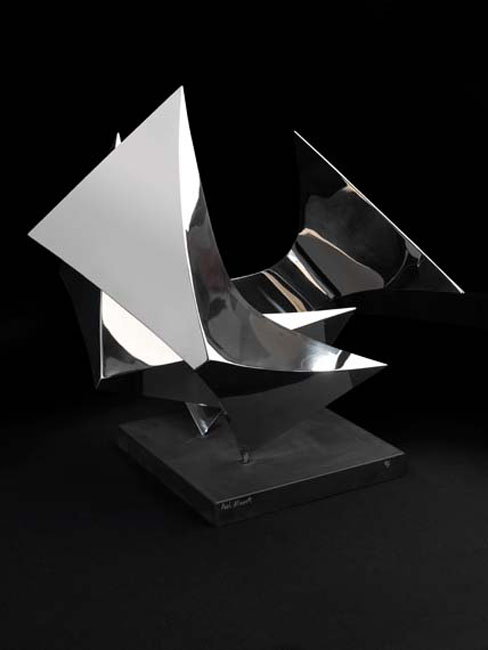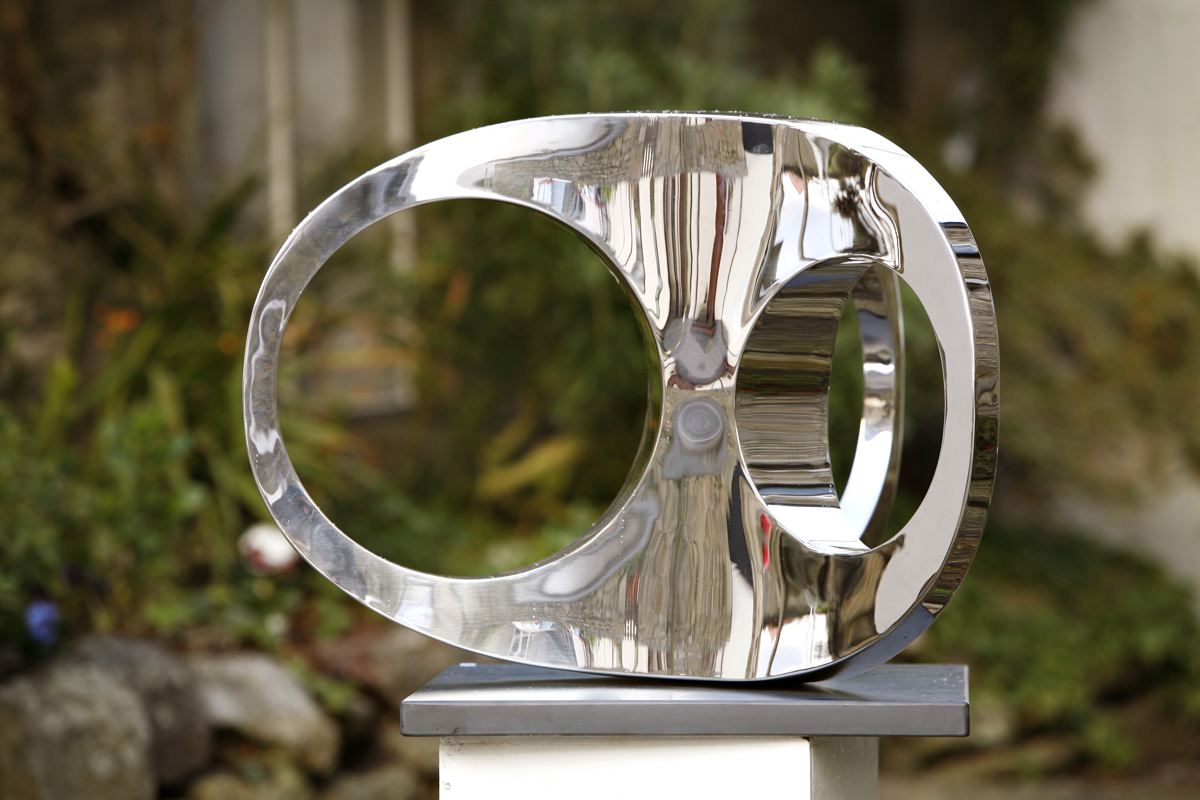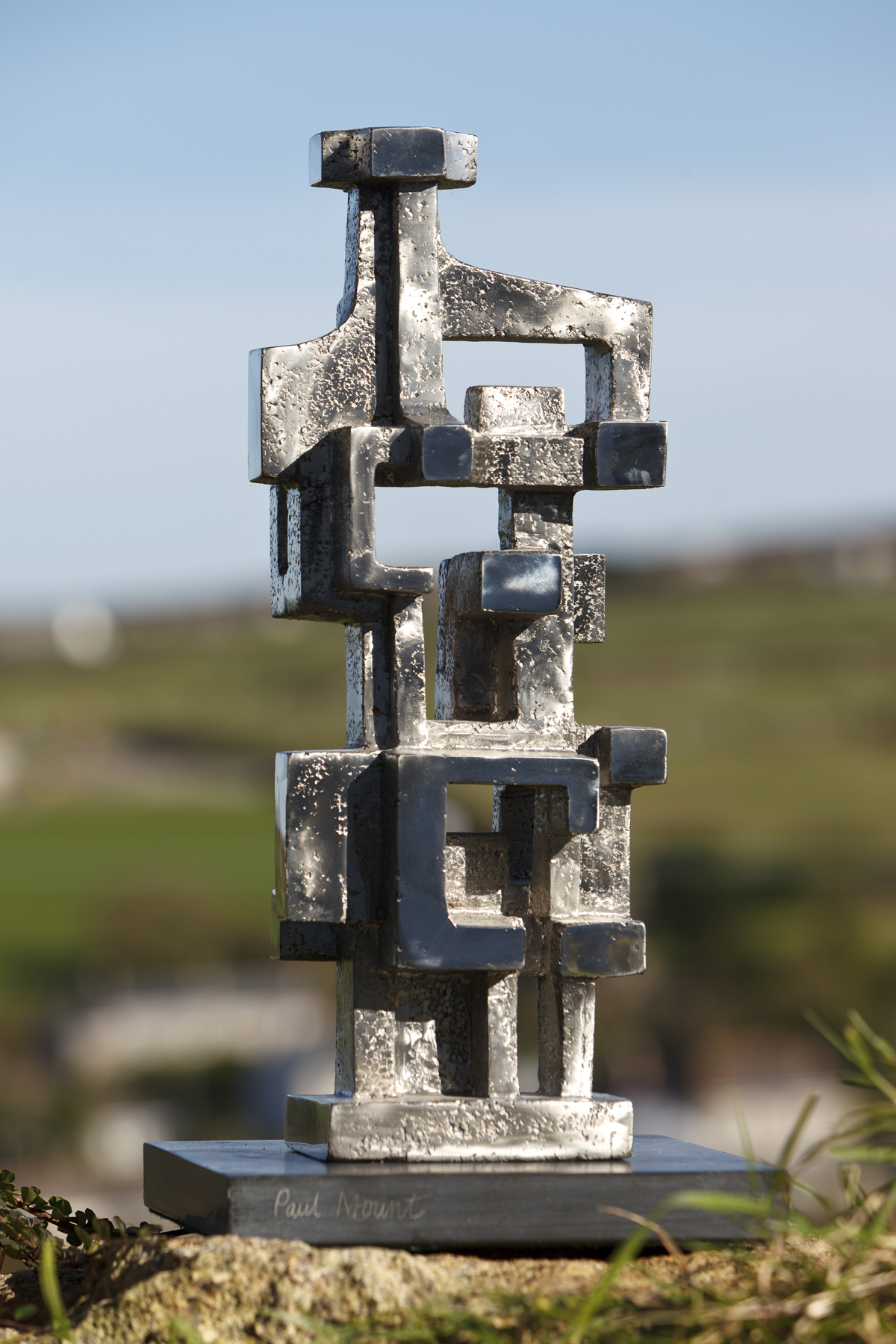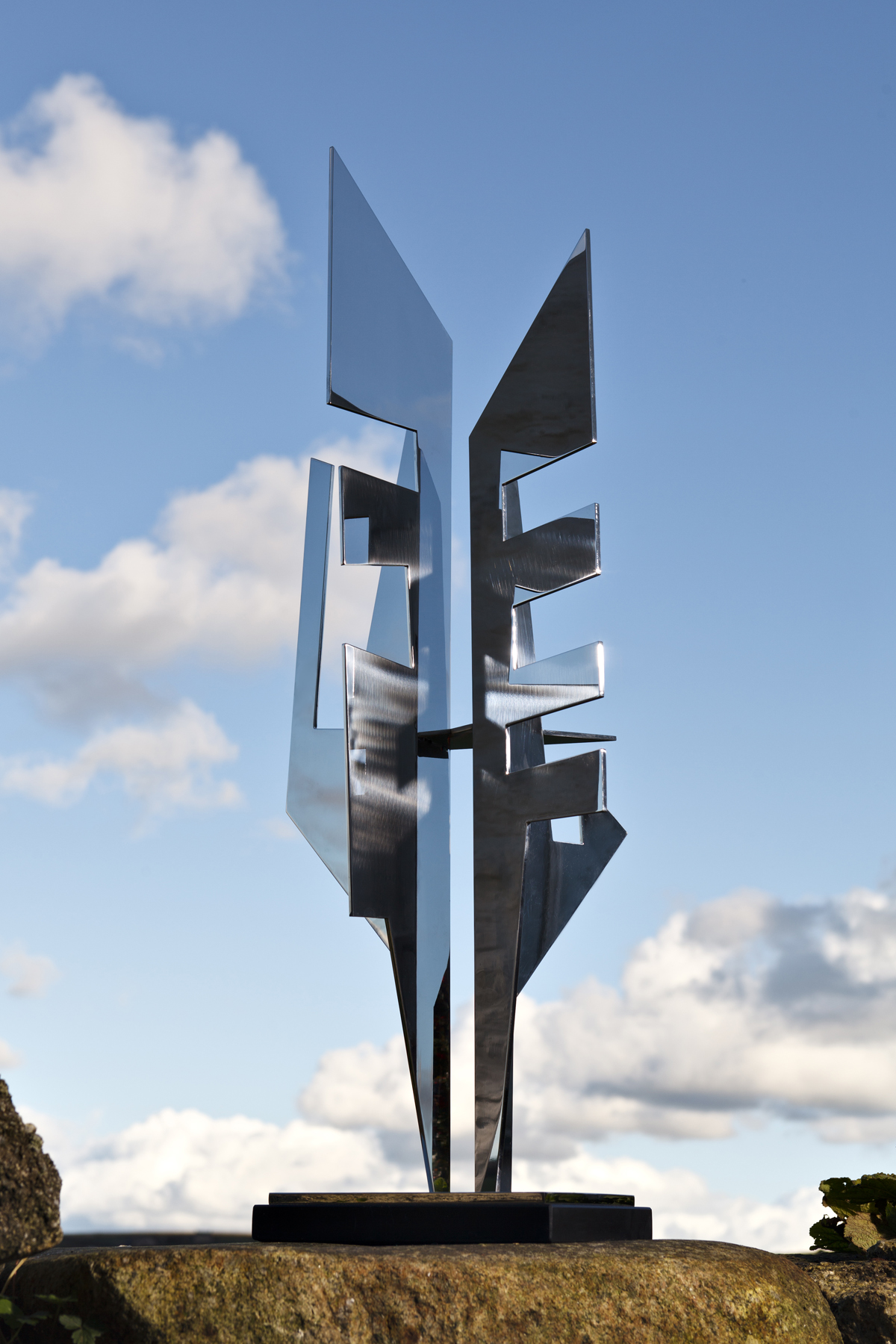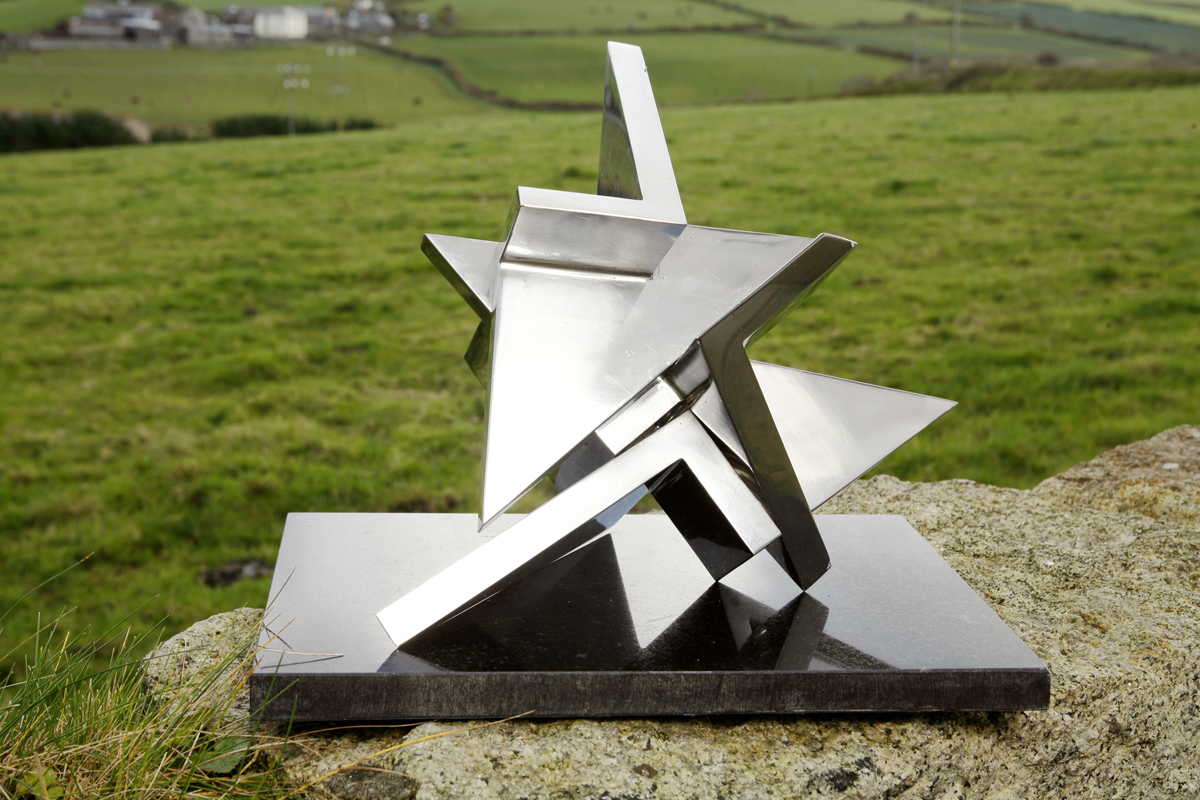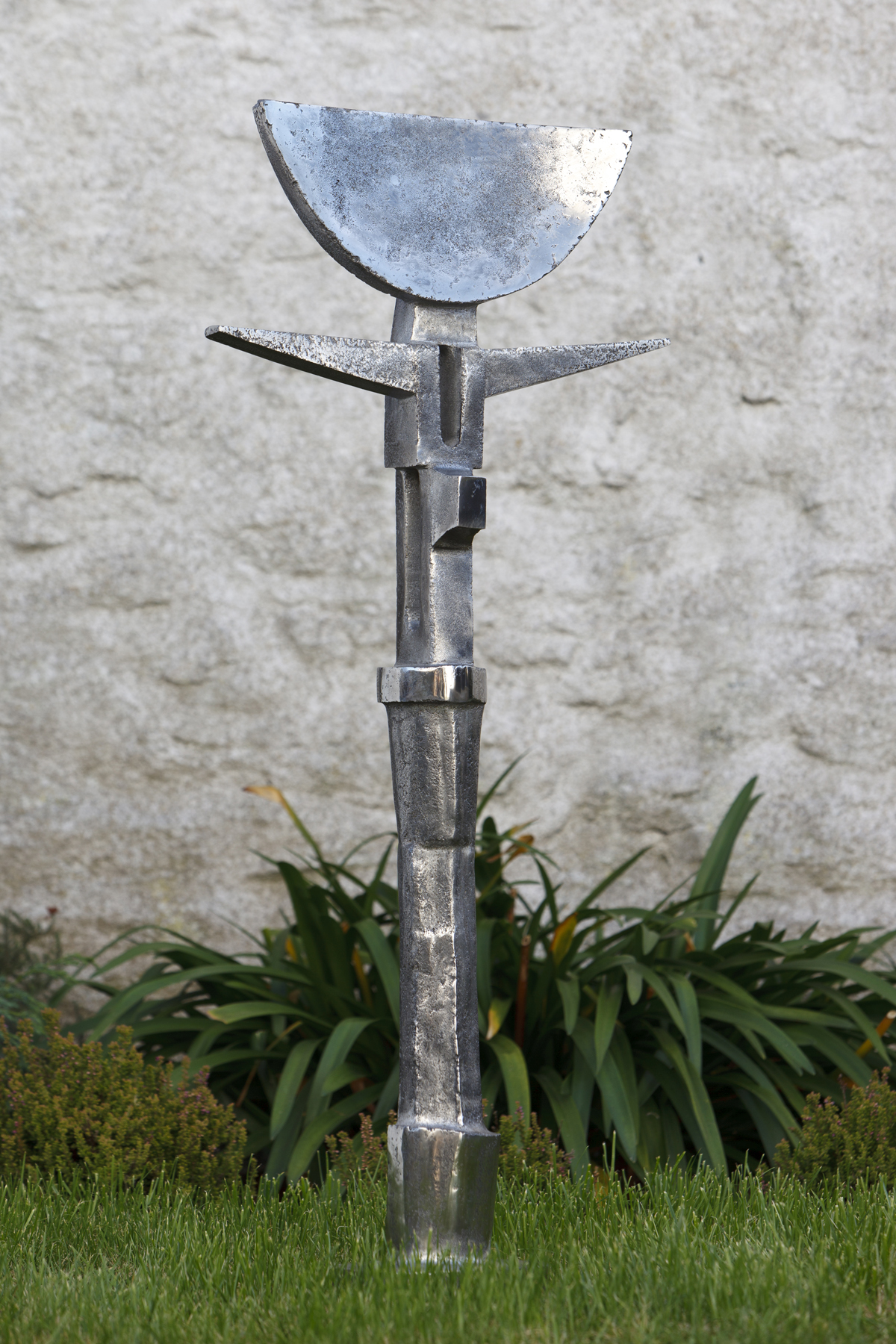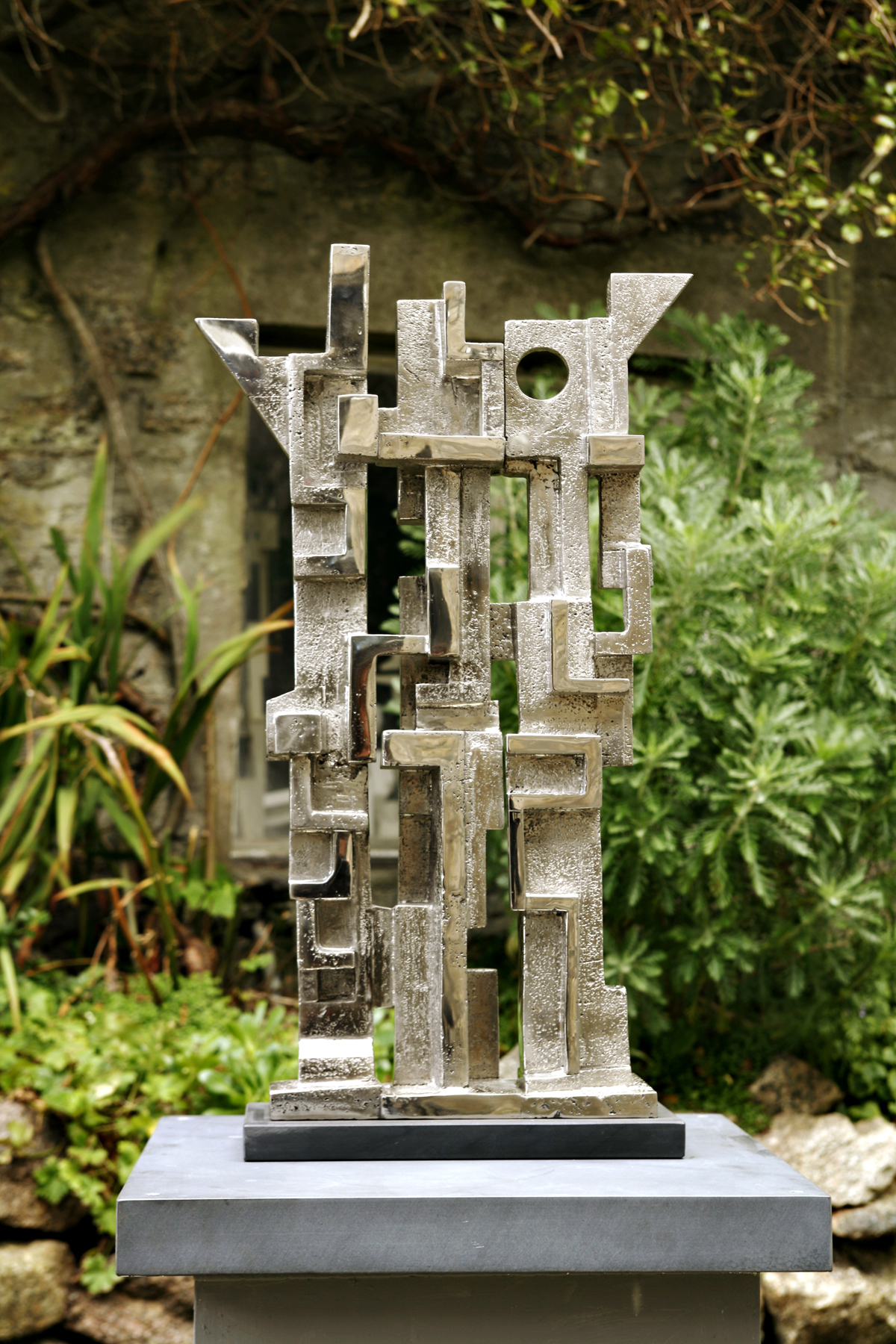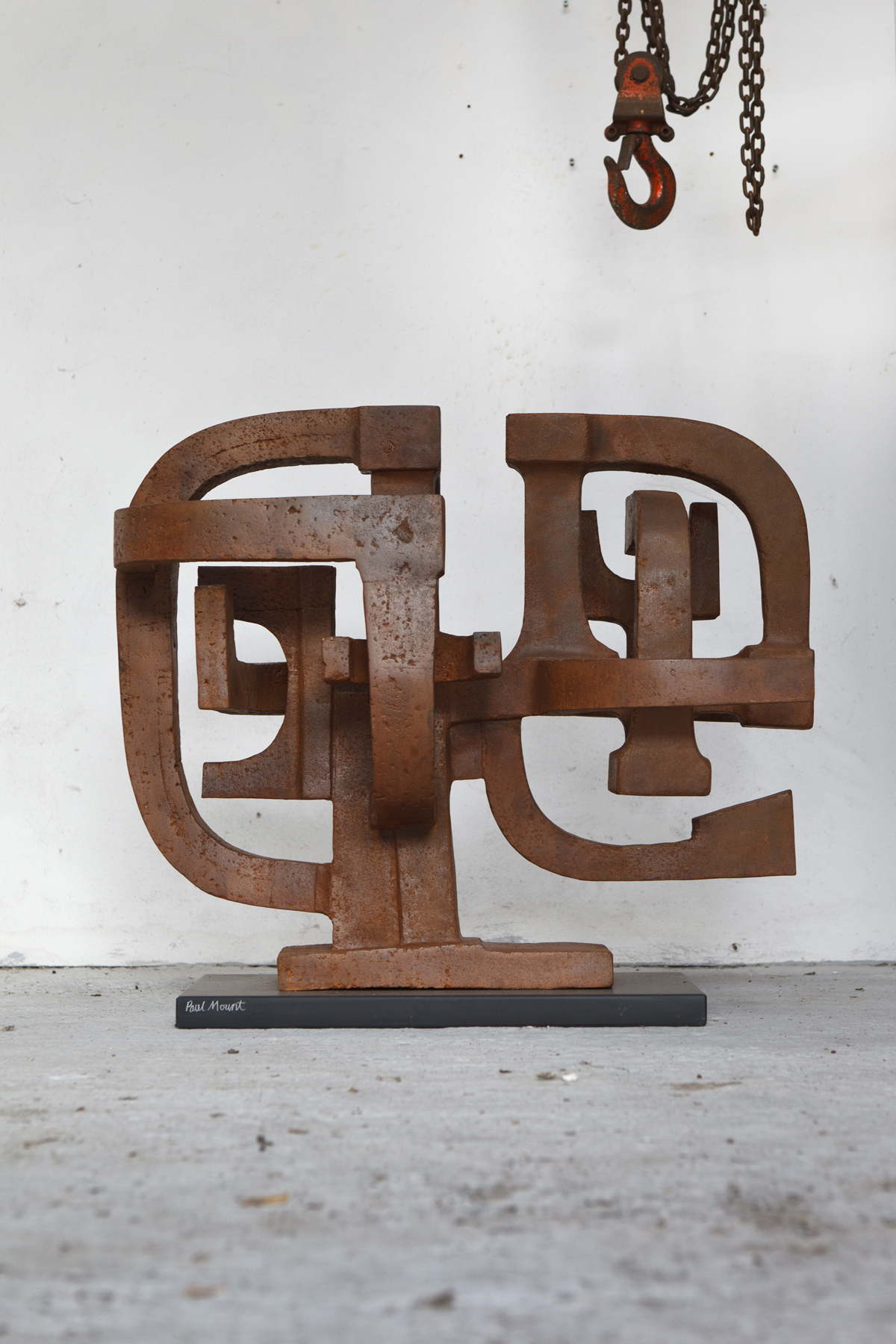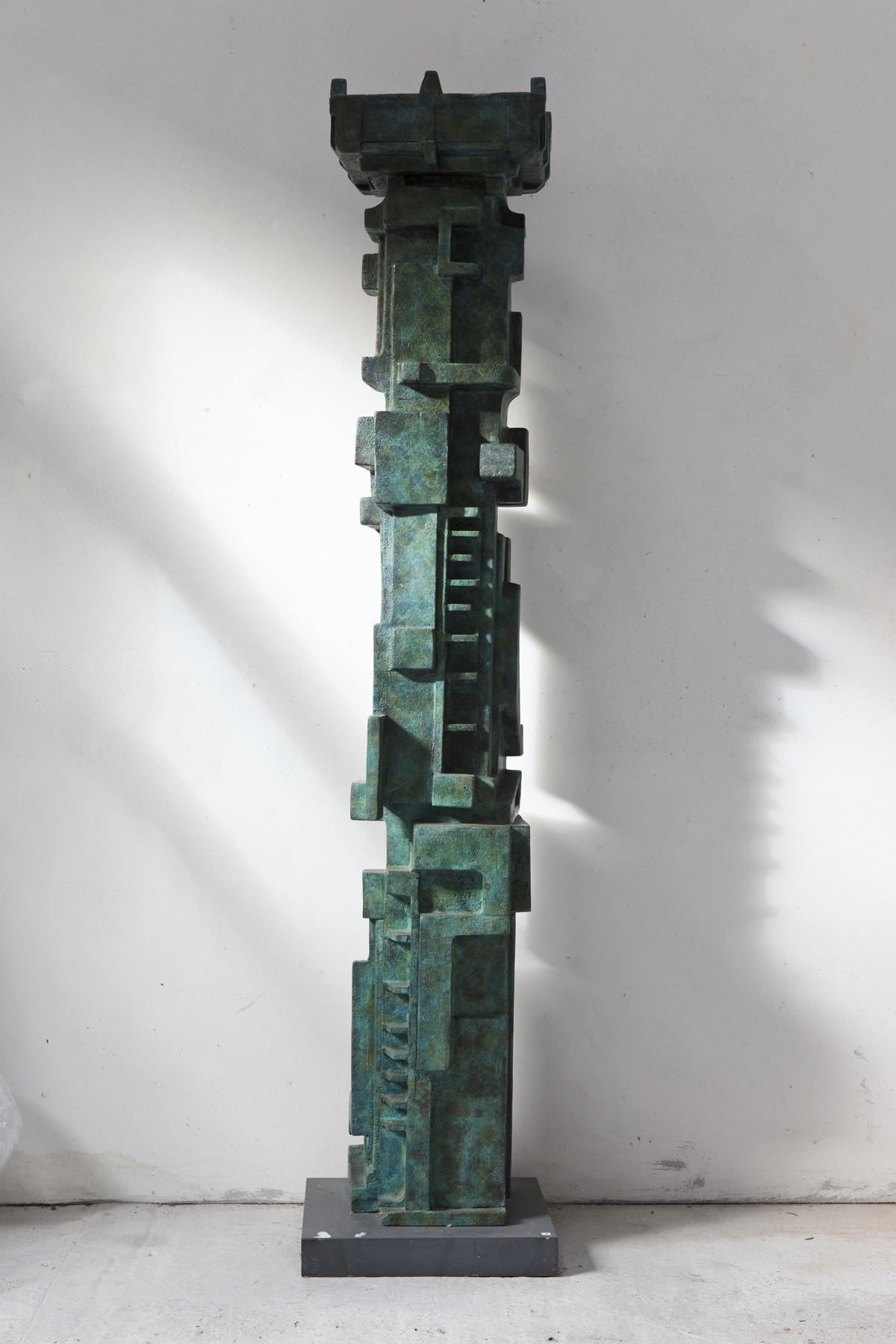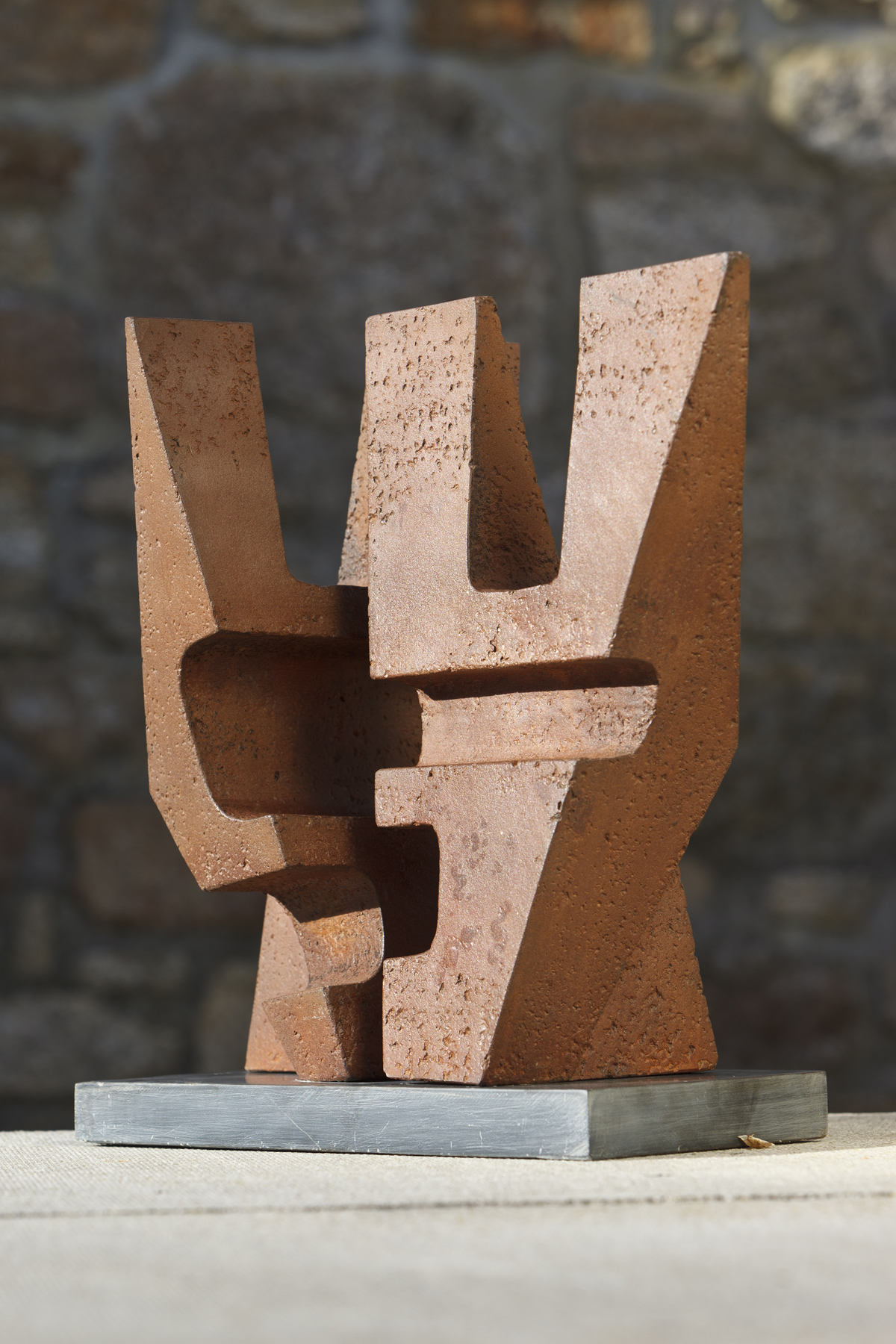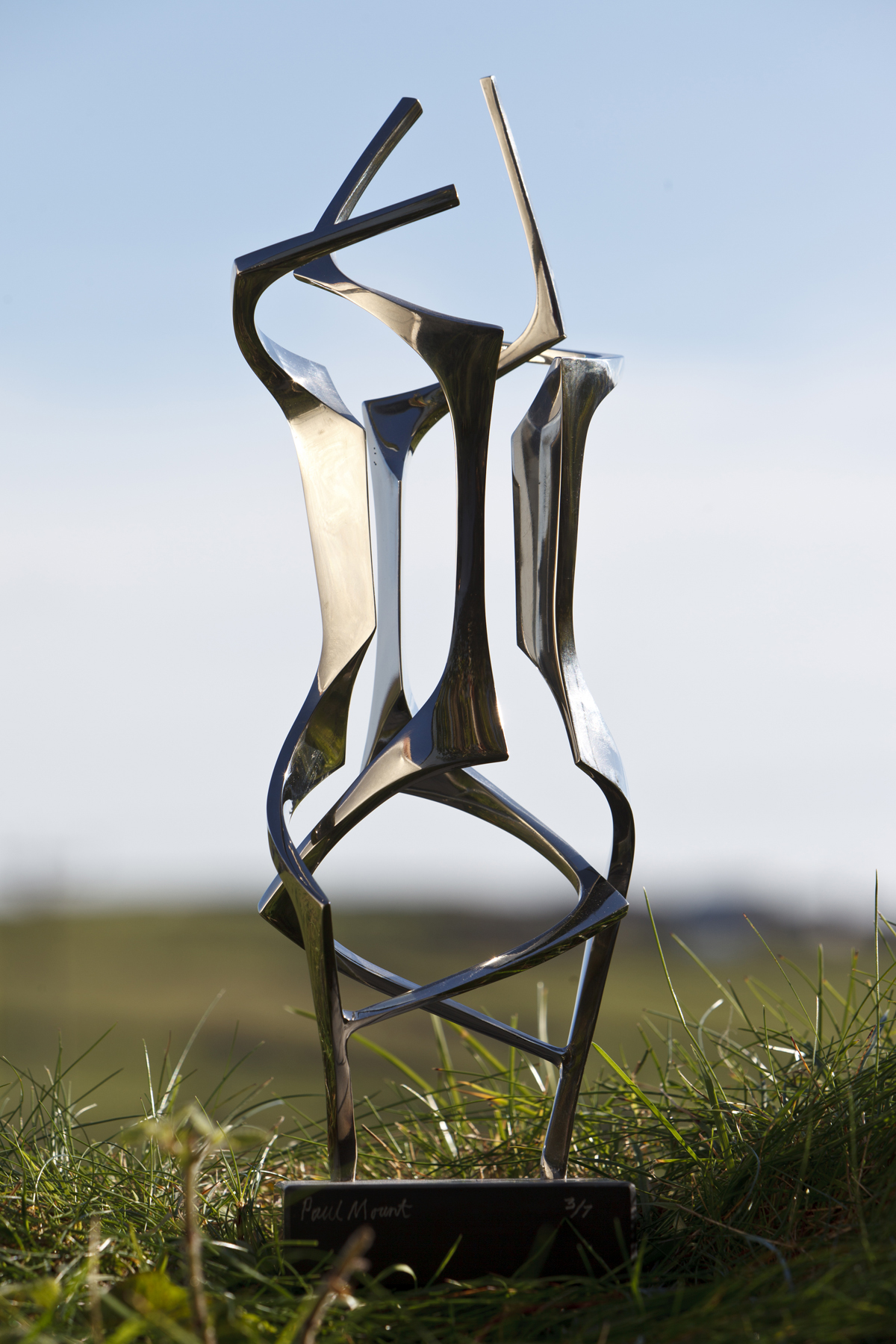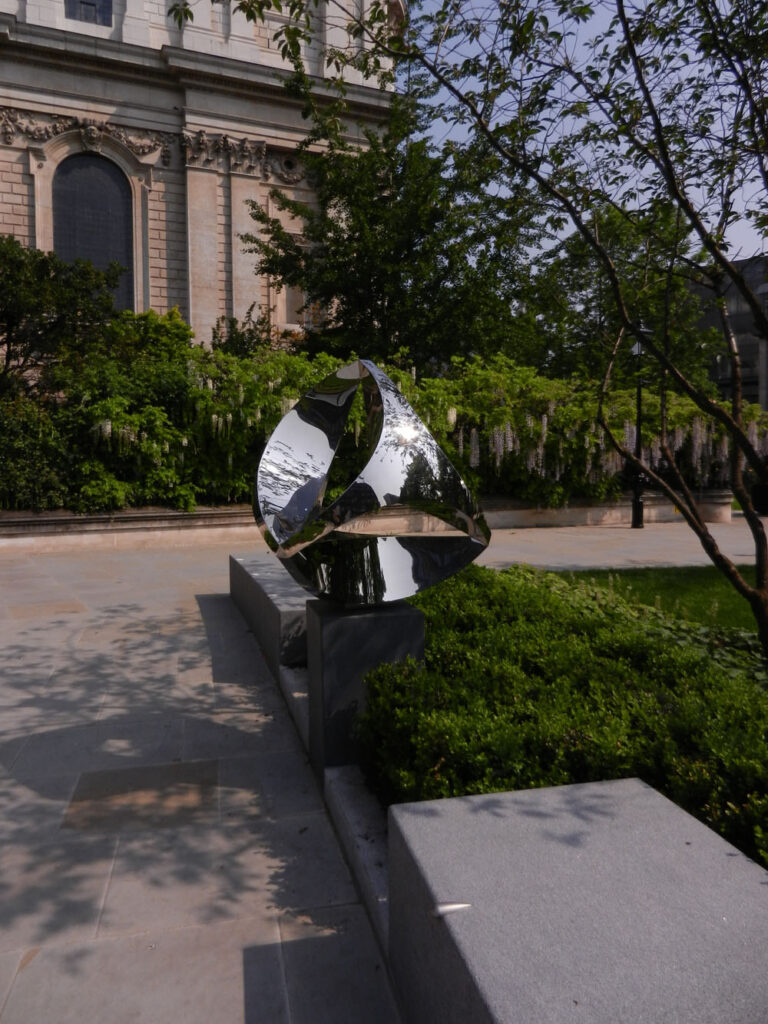For any information on the availability of the works please do email us at the gallery: info@beauxartslondon.uk or telephone us: 0207 493 1155
Paul Mount
1922- 2009 Born Newton Abbot, Devon Died St Just, Cornwall
1937 Attends Paignton School of Art
1940-41 Studies painting at the Royal College of Art (when based in Ambleside)
1941-46 A pacifist, he opts for work with the Friends Ambulance Unit. Goes to Morocco in 1943 to join the French 2nd Armoured Division as an ambulance driver; also sees service in the campaign for liberation of Paris and Strasbourg. Learns French and encounters French Romanesque art for the first time. Marries first wife, Jeanne Martin, a fellow Ambleside student
1946-48 Returns to the Royal College of Art, now based back in London, where his focus is painting portraits and urban landscapes
1948-55 Teaches drawing and painting at Winchester School of Art. Exhibits at the Royal Academy, the London Group and The Royal Portrait Society, among others
1955-61 Secures job setting up an art department at the YABA Technical Institute in Lagos, Nigeria; is given an empty building, no funds and has to recruit his own students. Has to teach every aspect of his subject, and even design furniture for his studio and new home. As a result, is commissioned by an architect to design furniture for one of his projects. Though never trained as a sculptor, Mount realizes his students are more likely to earn a living through 3-D work and employs a traditional wood carver from Benin to pass on his skills to the students. Through his architectural contacts he takes on various sculptural projects together with his students. Finds himself increasingly absorbed by his interest in sculpture
1961-62 Spends a year as a design consultant with Borys Group (architects) in Lagos and undertakes first large-scale architectural reliefs
1962 Returns to Cornwall, where he sets up a working studio in Nancherrow, near St Just, with his wife, painter June Miles. Develops his sculptural techniques, learning to weld from a local blacksmith and begins to get commissions. Becomes a member of the Newlyn and Penwith Societies of Artists and shows both painting and sculpture alongside Hepworth, Heron and Hilton
1965 First London show as a sculptor at the Drian Gallery
1975 Solo exhibition at Marlborough Fine Art, London
1976 Divorces Jeanne and marries painter June Miles
1978-87 Exhibits regularly at the New Art Centre, London
2001 Exhibition at Falmouth Art Gallery
2009 Dies 10 January First solo show with Beaux Arts, London
Solo shows
1965 Drian Gallery, London
1968 John Whibley Gallery, London
1970 John Whibley Gallery, London
1972 John Whibley Gallery, London
1973 Galerie Ruf, Munich, Germany
1975 Marlborough Fine Art, London
1976 South West Arts
1978 New Art Centre, London
1979 Galerie Contemporaine, Geneva
1980 New Art Centre, London
1981 Galerie Ruf, Munich, Germany
1983 New Art Centre, London
1987 New Art Centre, London
1989 Beaux Arts, Bath
1991 New Art Centre, London Penwith Gallery, St Ives
1998 Penwith Gallery, St Ives
2001 Falmouth Art Gallery
2003 Beaux Arts, Bath
2004 Thompsons Gallery, London
2008 Beaux Arts, Bath Gibberd Gallery, Harlow
2009 Beaux Arts, London Penwith Gallery, St Ives
2011 Beaux Arts, London Has also exhibited at The Royal Academy,
Royal British Society of Sculptors, Royal West of England Academy,
Newlyn Gallery and art fairs in London, Chicago, Madrid and Basel.
Commissions
Swiss Embassy, Lagos, Nigeria (concrete) Chase Manhattan Bank, Lagos, Nigeria (carved concrete) Cabinet Offices, Accra, Ghana (concrete) Ibaban University , Nigeria (terrazzo) Cocoa House, Ibadan, Nigeria (welded steel) W.N.D.C. Building, Apapa, Nigeria (welded steel) Fibreglass Ltd, St Helens, Lancs (glass-reinforced plastic) British Steel Corporation, London (stainless steel) York House, Bristol (stainless steel) Tafawa Balewa Square , Lagos, Nigeria (steel and aluminium) Tafawa Balewa Memorial, Bauchi, Nigeria (sand-blasted concrete) Government House, Lagos, Nigeria (steel and aluminium) House of Sir Frederick Gibberd (cast iron, stainless steel mobile) C.R.S. Redruth and Falmouth (glass-reinforced plastic)
Public collections
Cornwall County Collection Department of the Environment Exeter University
Falmouth Art Gallery
Harlow Art Trust Hyde Collection & Fermi Collection, USA
Plymouth Art Gallery
Stanley Picker Trust Truro Museum
Private collections
Australia , Canada, France, Germany, Holland, Italy, Luxembourg, Spain, Sweden, Switzerland, Turkey, UK and USA Associate of the Royal College of Art, an honorary member of the Royal West of England Academy and a member of the Penwith Society of Arts
Out of Africa: Paul Mount’s Modernist Journey by Michael Bird
‘The way that two shapes relate’, Paul Mount observed, ‘is as important as the way two people relate.’ It’s not hard to apply this statement to Mount’s abstract sculptures, in which it often feels that every discrete form, angle and facet finds its echo or answer within the work’s enclosing silhouette. Even the intangible blocks of negative space behave like this; the more open the forms, in fact – as in Fugue (2006) or Ewigkeit (2008) – the more palpably relationship exerts its electromagnetic push and pull between them.
There’s a humanistic touch of Henry Moore about Mount’s dictum, borne out by the epigrammatic organicism of such works as Sarabande (1987) or Nucleus (1990), which chimes with the way Mount is usually placed in the lineage of modern British sculpture. But these sculptures also bear witness to preoccupations that were peculiarly his own – the sense of relationship, for example, that’s expressed in the complex fit between distinct elements. Some pieces, like Tetrak (1975) and Sextet (1982), take the form of three-dimensional puzzles in which any expectation of a neat solution is lost in the angular, shifting interplay of their reflective surfaces. Again, where the imaginative movement in Moore’s sculpture tends to be expansive – ‘a metaphor of the relationship of humanity with the earth’ – even Mount’s monumental works have a poised reticence suggesting inwardness, intimacy. Polished steel – that ‘extension of the sculpture within its own reflective surfaces’ that fascinated Mount – mirrors the viewer and the world outside while protecting the spaces within. Interlocking forms frame voids and vistas; but when you look again, you realise that the silhouettes of Mount’s sculptures are firmly drawn, like a seamless openwork carapace.
What lies at the heart of this distinctive dynamic? Mount’s early career contains few clues. Until the age of thirty-three, after all, he was a painter, and not a particularly adventurous or modern one. His training at the Royal College of Art was interrupted by World War II, during which, as a pacifist, he joined in the Friends’ Ambulance Unit, serving in North Africa and France. In 1946 he returned to the RCA; the paintings he produced in the late 1940s have a Euston Road-ish air, discovering a patient, particular lyricism in the camouflage-tinted landscape of Austerity Britain. In Ronald Gaskell’s biographical essay, the young Mount feels a much deeper affinity with the old masters than with the twentieth-century avant-garde, finding the 1948 Chagall exhibition at the Tate (apparently his first serious encounter with modern art) simply ‘puzzling’. After graduating that year, Mount took a teaching job at Winchester School of Art, settled in a picture-book Hampshire village nearby and exhibited in the usual establishment shows.
And so it might have gone on. In the event, what turned Mount into a modern sculptor was Africa. In 1955 he was offered a post in Lagos, where he was to be responsible for setting up the art department at Yaba Technical Institute in a suburb of the city. Whatever led him to make the break – material considerations (he had a young family to support) or a sudden desire for change – the contrast to English provincial life around Winchester could hardly have been more striking. Lagos in the second half of the 1950s was a cosmopolitan capital where, alongside the political excitement in the run-up to full Nigerian independence in 1960, a West African cultural and artistic renaissance was underway, most famously in the thriving Highlife music and literary scenes. The about-to-be-born state of Nigeria was highly conscious of its precolonial artistic heritage, too, more specifically its sculpture. As far back as the 11th or 12th century, Yoruba sculptors and metalworkers had been producing bronzes of an aesthetic and technical sophistication unrivalled in Europe before Donatello, while a tradition of integrating sculpture into architecture was exemplified by the early twentieth-century work of the great woodcarver Olowe of Ise.
Mount threw himself into his new role with characteristic dedication and resourcefulness. Beginning with an empty building, he had to recruit teachers and attract students. He quickly decided that there was no point in teaching painting – students needed skills with which they could earn a living. Mount designed and constructed some basic but serviceable studio furniture and equipment, and employed a Benin woodcarver to give instruction. After watching him at work, Mount later recalled, ‘I had always been interested in sculpture [but] I had never until then thought of doing it myself’. He acquired a set of tools and began to carve: ‘There was plenty of suitable wood available – iroko, sida, ebony, for the asking.’
It was also in Lagos that Mount absorbed the language of modernism, not by looking at sculpture but through collaborating with the architects who were charged with transforming the city into an international capital on a self-consciously – and now controversial – Western model. International Style flat roofs and curtain walls, so unsuited to the British climate, translated well to West Africa, where a leading exponent of the style, Maxwell Fry, had been working since the war. In the late 1930s Fry, along with Gabo, Hepworth, Nicholson, Gropius and Goldfinger, had been part of Hampstead’s brief heyday as a modernist epicentre. With his partner and wife Jane Drew, Fry adapted modernist architectural principles to tropical conditions. Their work set the tone for other expat International Style practices that were to flourish on a steady supply of prestige Nigerian contracts that continued through the oil boom era into the 1980s.
On the strength of his improvisations at Yaba, Mount was commissioned by Nickson & Borys to design furniture. By the early 1960s he was consulting on a variety of design elements and had progressed to large-scale architectural sculptures in concrete, of which the first was the screen wall at the present Swiss Embassy, followed by the NIPC Building and House of Z (all 1960). Mount evolved a sculptural idiom that followed the requirements of tropical modernism, in which the Corbusian emphasis on the play of light was replaced by the need to reflect heat and allow air to circulate through the interior. ‘I had not originally intended to design an abstract form’, he recalled, ‘but the limitations [of cost and materials] dictated it’. The rectilinear wooden shuttering into which the concrete was poured allowed for modular variations in its arrangement. Mount relished the challenge of creating sculptural forms within fixed engineering and construction requirements. ‘Many beautiful bridges’, he reflected, ‘have been built by engineers who were unconcerned with aesthetics.’ The lessons learned in Lagos about the interaction of planar reflective surfaces and airy but shielded internal spaces continued to shape Mount’s work when, after returning to Britain in 1962, he embarked on an independent career as a sculptor. Even then, he often relied on architectural commissions, such as his steel and aluminium gates for Tafawa Balewa Square in Lagos (Fry, Drew & Atkinson, 1977), to provide an income.
Mount settled with his family in St Just, an old tin-mining town near Land’s End. In the light of his later assimilation to the story of modern art in Cornwall, it’s worth remembering that St Just simply happened to be where he had bought a small, cheap cottage as a holiday home while in Africa. It was almost coincidental that the coastal moorland that stretched from behind the house eastwards as far as St Ives had become the adopted spiritual homeland of a large and disparate group of painters and sculptors in the postwar decades. This was the territory of which Barbara Hepworth exclaimed, ‘I the sculptor am the landscape’, and where the air, Patrick Heron insisted, ‘contains more light than in England’ – a country so mysterious and atavistic that ‘it makes a man psychic’, or so D.H. Lawrence thought.
Mount gave little sign of sharing such fantasies. For him post-industrial Penwith was what it always had been, a place to get down to work: he introduced himself at the local foundry, took arc welding lessons from a blacksmith, and ‘found a source of stainless steel off-cuts in a factory in Hayle’. He discovered a delight in metalworking, and that the steel strips could be made into mobile sculptures, following ‘a principle I had seen in some balanced toys in Nigeria’. Like generations of incoming artists, he went down to Newlyn harbour to draw, but ‘not so much the fishing boats themselves as the gear’. He began to exhibit his sculptures and, in the usual course of things, to find his bearings in local artistic society. The point remains, however: when Mount arrived in Cornwall in 1962, the artistic dynamo that had given ‘St Ives’ its moment in the international limelight was winding down. Perhaps, in any case, there was truth in his near neighbour Karl Weschke’s insistence that this had always been ‘a very effete artistic society’, where creative freedom was often underwritten by private means. Mount’s Lagos years, on the other hand, had coincided with the cultural and economic ferment attending the birth of a nation, in which art was not to be seen as a voyage of self-discovery but as part of the social fabric.
Industrial materials, different metals and ways of working them – these things absorbed Mount much more intensely than the landscape in which he lived. Of sculpture in general he wrote, ‘The process determines the character of the forms’, and from 1962 to his death in 2009 he experimented with a range of metalworking processes. He used cast bronze and iron, spot-welded sheet bronze (The Birds, 2008, is a beautiful example) and stainless steel. The steel pieces were fabricated from cardboard maquettes, whose construction involved the manipulation of cut-out shapes. Though it looks as though this process was almost mathematical, like solving a Rubik’s cube, it was in fact wholly empirical, based on trying out countless permutations of the numbered pieces.
By a window in Mount’s old studio-home there’s a mirror-backed cabinet filled with little cardboard maquettes – ideas of the kind that eventually became much larger stainless steel sculptures. The patient precision that went into their assembly, the fitting and balancing, the use of ordinary materials that happened to be to hand – all this must have been part of the way Mount designed the chairs and easels for his empty art department in Lagos in the mid-1950s. The geometries are clean and purposeful as an architectural drawing. But there is nothing cold or doctrinaire about these late-season flowers of the modernist aesthetic. The mirror behind the maquettes reflects the landscape outside the window – fields running anyhow into granite walls and gorse scrub – a mirror world in which the cardboard sculptures assume a monumental scale. There is something in these forms that goes far beyond process. And here another favourite trope of Mount’s comes to mind – the analogy between music and sculpture. He was thinking of sculpture, but he might equally have meant music, when he described his pursuit of an art that ‘conditions and organises thin air’.
Michael Bird December 2010
‘I’m very much a formalist’, Paul Mount points out firmly. It’s not a fashionable claim; there’s not much formalism to be found on Turner Prize shortlists. And yet, you could argue, form is the basis of more or less everything, and certainly is crucial in all the arts.
‘I like form for its own sake’, Mount goes on, ‘Whether it’s in sculpture, design, music, architecture or painting.’ Indeed, in the course of a long career, he has worked in several of these areas himself. Mount is a painter as well as a sculptor; some of his sculpture is virtually architectural in scale – including one, in concrete, comprising an entire wall of what is now the Swiss Embassy in Lagos, Nigeria. He has also produced designs for furniture and other areas of applied design, such as signs.
‘I find in all the arts there is a basic design structure. If you are a designer you can design in almost any medium. It’s all the same. Of course, in the Renaissance, sculptors and painters designed whole buildings.’ That is another assertion that you don’t hear very often these days. Yet it was true of many periods in the past – the age of the Romanesque and baroque, for example – and also the era of high modernism into which perhaps the early career of Paul Mount belongs. A chair by Gerrit Rietveld belongs in the same formal world as a painting by Mondrian; Mies van der Rohe’s architecture is visibly, though more distantly, related to the paintings and sculpture of Ben Nicholson.
Picasso was famously dubbed a ‘painter/sculptor’; Paul Mount could be described as a painter/sculptor/designer. He remains interested in the integration of sculpture and architecture, which he finds fascinating in the Romanesque, and also in the work of the Spanish-Basque sculptor Eduardo Chillida (which has an evident affinity with Mount’s own).
In Mount’s career, one art and medium has led to another as chance and circumstances developed. His interest in stainless steel as a medium – also a favourite with early modernists such as Mies van der Rohe and Brancusi – came about in an entirely practical manner. ‘I had a contract to design a swimming pool – which never came to anything in fact – but it got me interested in stainless steel, because for this project I knew I’d have to use something that didn’t corrode.’
But once he had started to use stainless steel, he became aware of other properties apart from its immunity to rust. The most obvious of those is that its shiny surface is, in effect, a mirror. Consequently, looking at a work in stainless steel is an entirely different experience from viewing the same forms in, say, concrete or iron.
When looking at a sculpture in this material, you see yourself, and the whole world, as in a looking glass, but wonderfully altered by the curved planes of the piece – and not just the world, but also other parts of the piece itself. ‘By juxtaposing the parts of the sculpture’, Mount points out, ‘you can build another virtual sculpture inside it with reflections.’
Several of the works in this show have a central opening or, like Pentegg, are made up of two separate forms which face each other. In the case of Ewigkeit a single ribbon of metal twines around itself. All of these naturally reflect and reduplicate themselves as well as everything around them. The reflections on the surface of a work such as Entente amicale seem as fluid as those on rippling water, but the piece is sharply defined like a piece of highly engineered machinery. It’s a beguiling and also enigmatic combination.
Modern science suggests there might be something more fundamental in the analogy between the arts. Rhythm, for example, seems to be a human universal, as readers of Oliver Sacks’s new book Musicophilia will learn. Indeed, the capacity of a group of people to hold a beat – dancing, playing instruments, or merely tapping their feet together – is one ability, perhaps the only one, that distinguishes homo sapiens from other creatures. So Mondrian was not just being whimsical when he named an abstract painting after a recording of blues piano, Broadwayboogie-woogie. Pictures and buildings can have rhythm as well as form. Indeed, it might be difficult to have one without the other.
Paul Mount is a musician, and a glance at some of the titles of his sculptures and paintings past and present – String Quartet, Chaconne, Sextet, Il Trittico, Rondo, and one mobile named after Erik Satie’s work for piano, Gymnop é die – indicates to what an extent he has music on his mind.
‘Music is very important to me’, he confirms, ‘I played the organ, and if you play the organ you have to play Bach.’ The compositions of Johann Sebastian Bach, with their interplay of themes and parts, provide a good analogy for the contrapuntal complexities of some of Mount’s work. He once named a painting after Bach’s A Musical Offering. One of the beautiful stainless steel pieces in this exhibition of new work is named Spectre de la rose, presumably in homage to the song of that name in Berlioz’s song cycle Nuits d’été .
It was not only Mount’s interest in stainless steel that arouse from practical design. His interest in sculpture originally came about in the same way. In 1955, when he was in his early thirties, Mount left Britain to take up the post of Director of the Art Department at YABA Institute of Technology in Lagos. It was there that he began to sculpt, and it happened – as he tells it – logically enough, but by accident.
‘ I went out to Nigeria as a teacher. The difficulty was that I found it hard to get students, and so to make up numbers some of the wives of colonial people came to the classes; one of them was the wife of an architect. He came to the house and saw some of the furniture I had designed; he liked it and immediately gave me a commission to design for all the airport buildings.’
In those days, one senses, that part of Africa was a land of opportunity – more so, perhaps, than post-war Britain. ‘It was an exciting period in Nigeria, it was the time of independence and there was a lot of new building. They needed interior design and everything that went with it. Then gradually I became more focused on sculpture.’
This scope to design a whole environment – designs, furniture, signs, sculpture – was exactly the role the early modernists of the Bauhaus envisaged for the visual arts. In another way, Mount’s career intersected in Nigeria with the previous history of modern art. African sculpture, especially West African work, had been an important source for early 20 th-century Cubists and Surrealists.
Paul Mount found himself learning the practical techniques of the art from a local artist. ‘When I first went out to Nigeria I wasn’t a carver or a sculptor at all, though I had done a little preliminary work in art school. So I found this chap who wasn’t any good at teaching but was a good craftsman and learnt the craft of carving from him.’
From the vicinity of ancient Benin and Ife, Mount returned to an area with its own distinctive and rather different place in artistic geography: West Penwith, the westernmost tip of Cornwall where he settled in St Just, not far from St Ives. Since the early 1940s this had been the home of a band of British modernists grouped around the painter/sculptor Ben Nicholson and his second wife, Barbara Hepworth.
Again as Mount tells it, this move was partly chance. ‘I’d bought this house in St Just as a pied à terre when I was in Africa, but when I came back I decided to settle here. Ben Nicholson had just gone when I arrived – I very much admire his work, there’s a sureness about his drawing that is incredible – but I knew Hepworth. Some of the earliest carvings I did were influenced by her work.’
There is an obvious affinity between the work of Paul Mount and that of Nicholson, Hepworth and other members of the St Ives circle. The rounded tripartite segments of Partage de midi in this exhibition, for example, have a distinct connection with Nicholson’s characteristic forms. On the other hand, there is a clear difference, too, in the polished, stainless-steel surfaces of Mount’s sculpture and its tendency to sharp, angular edges. Those are the signs of his individual sensibility and sources of inspiration.
Broadly, one might say that St Ives was where modernist abstract art met the British landscape tradition. Nicholson and Hepworth, and other artists associated with the area such as Patrick Heron, Terry Frost and Peter Lanyon, were much influenced by natural forms such as hills and rocks. Standing on a boulder-strewn Cornish beach you sometimes get the feeling that you are completely surrounded by natural Hepworths.
Mount, too, derived ideas from the landscape around him – ‘to some extent’. ‘I made drawings of rock formations’, he recalls, ‘and I used what I learnt from them in sculptures. I draw a lot of landscape, the forms of trees have always interested me, and I’ve spent a lot of time in France, drawing villages.’
He has also mentioned the movements of dancers – rhythm again – and flying birds as sources of inspiration. A piece such as Lozenge seems poised like a seagull on the wing. On the other hand, Pentegg suggests the splintered rocks and prehistoric standing stones of the West Cornish landscape.
Mount, however, had another source, which relates to a different modernist tradition. This emerges when he describes his sketching in the harbour at Newlyn. This had been a hunting ground for artists in search of ideas and themes since the 19 th century, when the so-called Newlyn School painted the boats and heroic fishermen in their sou’westers. But Mount found something there that had attracted no one’s eye before.
‘I did a lot of drawing in the harbour, not so much of the fishing boats themselves as the gear – I found that fascinating, and introduced a great many forms into my work that I wouldn’t have thought of otherwise. The shapes I got there I’ve used in both painting and sculpture.
‘I love machines’, he continues, ‘Some of the early iron sculptures I made were influenced by industrial equipment.’ An affinity for mechanisms is something Mount shares with an assortment of modernist and abstract artists – Ferdinand L é ger comes to mind – rather different from the St Ives group.
‘After a while’, says Mount – and he’s been making sculpture for a good while now, around half a century – ‘you get a very distinct feel for different kinds of shape. I suppose that is why you can distinguish one musician from another, for instance, or one composer. My instinctive preference is for more angular shapes.’
Of course, any formalist evolves a vocabulary of forms which are chosen intuitively, by instinct. One combination leads to the next. And, in some cases – the painter/sculptors, for example – one art-form flows into others. That personal sense of form is what gives Paul Mount’s work a delightful character of its own. Every true formalist, like Paul Mount, is also an individualist.
Martin Gayford, 2009
Throughout his career he also worked closely with architects, producing integral sculpture as part of buildings all over the world.
Commissions include a sculpture in the Queens Diamond Jubilee Gardens near St Paul Cathedral; the Spirit of Bristol, in St. James’s Square, Bristol; the British Steel Corporation, London and the Cabinet Offices, Accra, Ghana.
For Mount, sculpture expressed an essential human dignity. “The way that two shapes relate,” he observed, “is as important as the way two people relate.”


